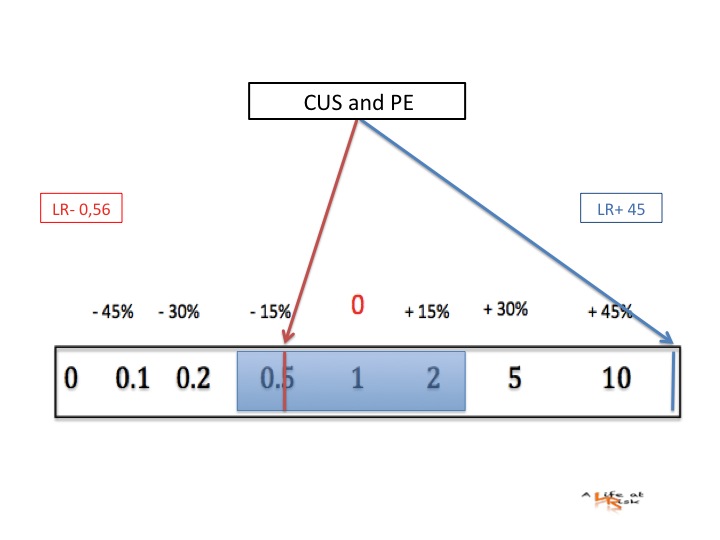A 80 y/o woman presented to the ED for dyspnoea.
She underwent a knee replacement 2 weeks ago, RR is 24, O2 saturation is 88%. HR is 90, the knee is edematous.
You are going to hunt a pulmonary embolism (PE)
While you phone the radiologist for a thorax CT scan you have an idea:
Can a compression ultrasonography (CUS) helps to avoid a CT?


Conclusion
Using Wells Score in this setting the PE pretest probability is intermediate (around 30%).
Effectively the post test probability after a positive CUS is very high. Diagnosing a deep vein thrombosys (DVT) in patients with suspected PE doesn’t require other tests: the treatment of DVT with or without associated PE is the same.
On the other hand after a negative CUS you need to keep hunting…
Bibliography
Emergency Medicine Australasia (2005) 17, 322–329
Likelihood ratios increase diagnostic certainty in
pulmonary embolism
K Chu and A FT Brown
Journal of Internal Medicine 250: 262-264
Utility of ultrasound imaging of the lower extremities in the diagnostic approach in patients with suspected pulmonary embolism
PS Wells et al


